
String Art Generator
String Art Generator by Yiran is a grasshopper plugin which generates a string art sequence based on an input image. You can

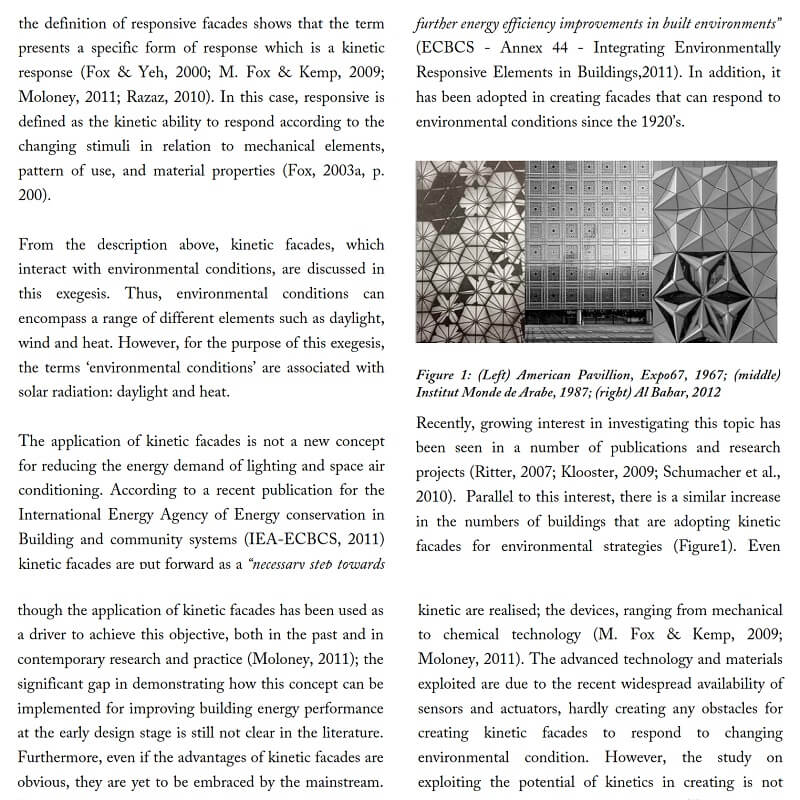
Over the past few decades, kinetic facades have emerged as alternative building envelopes, designed to meet the increasing of varying and complex demands related to user comfort, energy consumption and cost efficiency. This concept has been described in a number of ways, ranging from the usage of innovative components to highly complex designs and advance technological application.
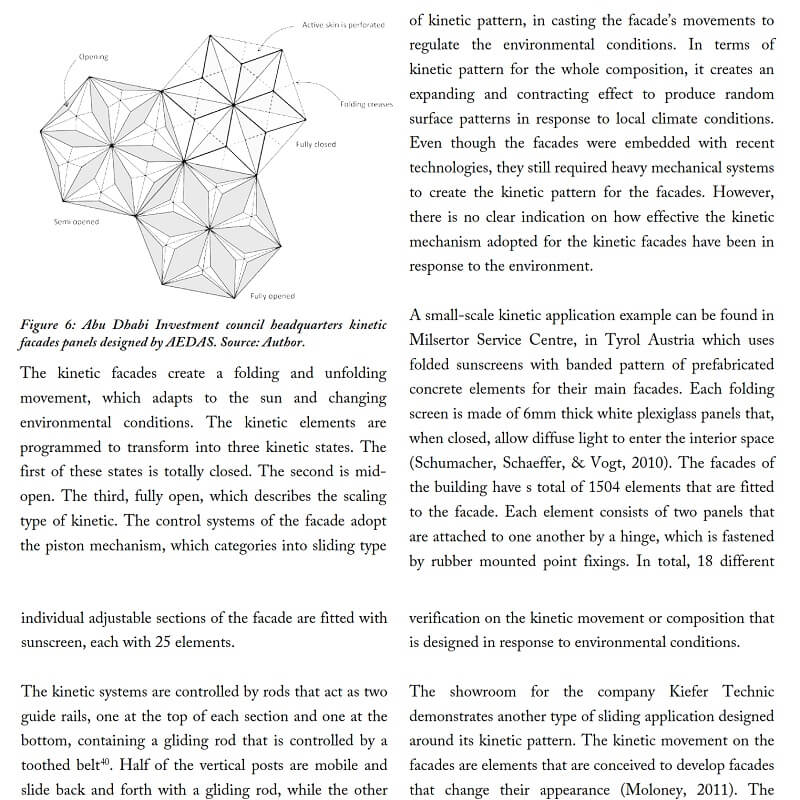
In this research by Kamil Sharaidin, kinetic facades are defined as the ability to response and adapt to the changes of the environmental conditions. The strategies mainly focus on the functions and performances of kinetic facades in the context of indoor daylight quality and thermal heat performance. These are achieved by examining the role of kinetic elements on the building facades to form effective kinetic configurations in response to environmental changes.
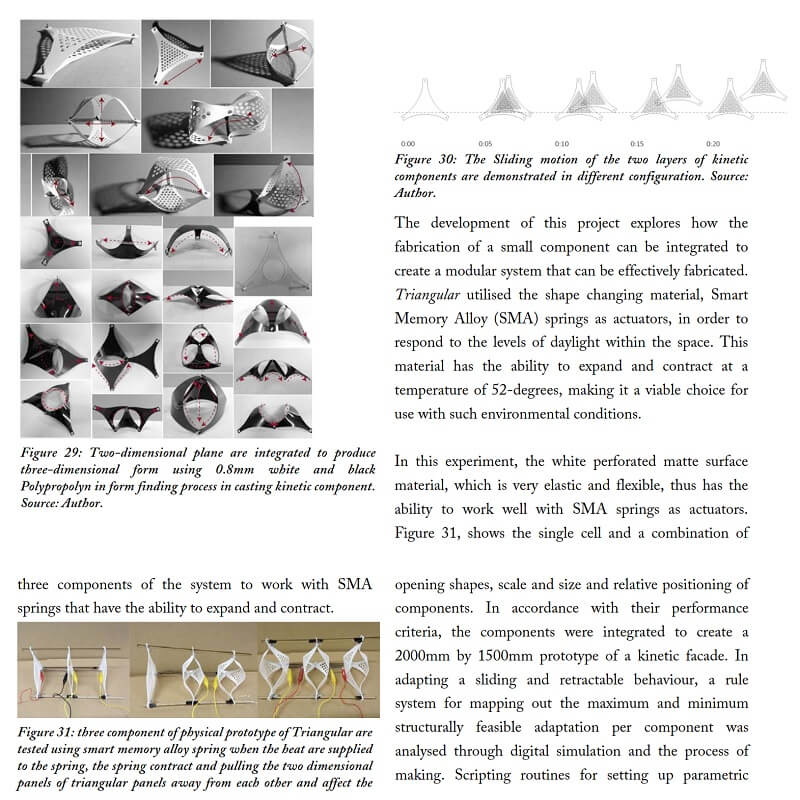
Identifying and evaluating the performance of kinetic designs on the building facades at the early design phase will assist designers to understand design issues and strategies in constructing the kinetic facades. Although the existing design implementation of kinetic facades were intended to enhance the building performance, the inclusion of daylight and thermal radiation, a fair number of them struggle to achieve the optimum performance after the facades were installed and being operated.
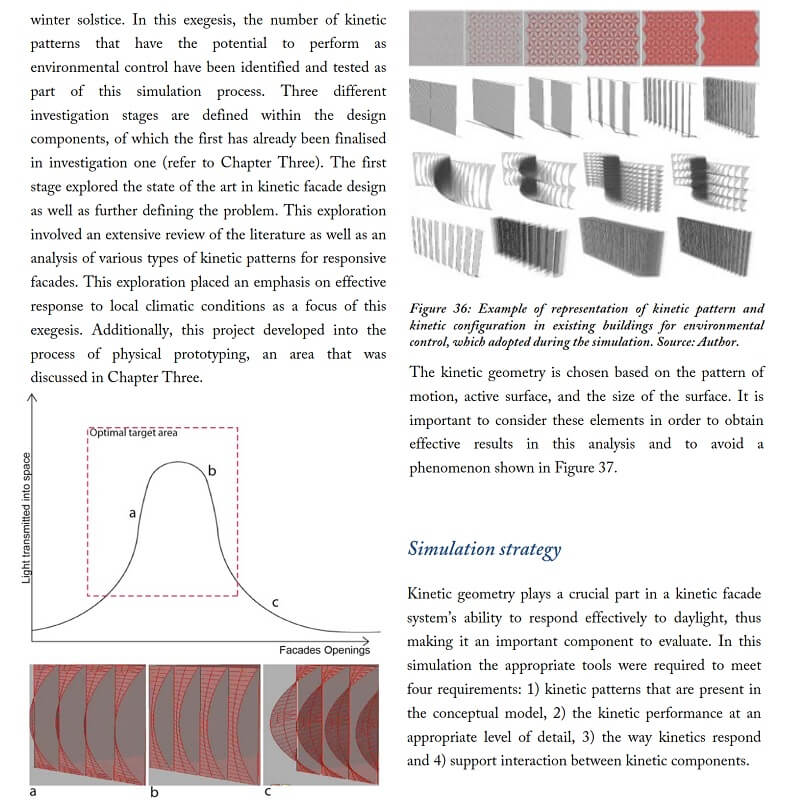
Designing and evaluating responsive kinetic facades are complex tasks as they involve interactive kinetic elements within three-dimensional dynamic physical elements or components that constantly change. Therefore, this research presents a methodology, alternative tools, and design evaluation techniques, which define a performance-based design, an approach to analyse the design and simulate responsiveness of kinetic facades during the early design phase.
 This demonstrates how the process of designing and developing kinetic facades can be effectively tested and evaluated to understand the challenges and problems before the actual facades are constructed and installed in the buildings. As designing static facades totally contrasts from designing dynamic components that involved various state changes, this research proposed alternative platforms for designers to design and evaluate the kinetic facades, which respond to the environmental condition.
This demonstrates how the process of designing and developing kinetic facades can be effectively tested and evaluated to understand the challenges and problems before the actual facades are constructed and installed in the buildings. As designing static facades totally contrasts from designing dynamic components that involved various state changes, this research proposed alternative platforms for designers to design and evaluate the kinetic facades, which respond to the environmental condition.
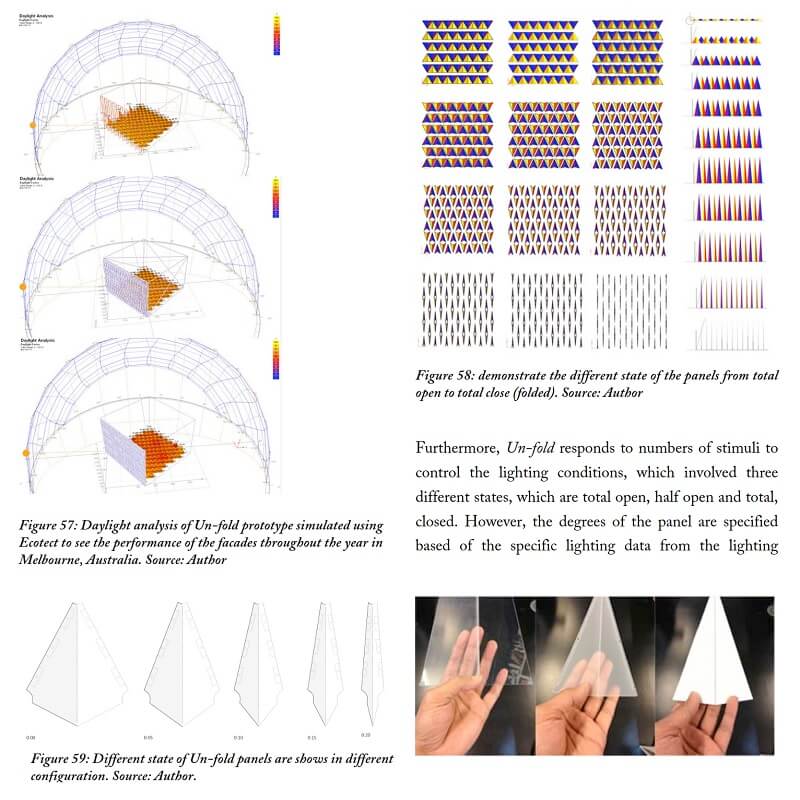 One major contribution of this research is a dual methodology for designing and evaluating kinetic facades, using analogue and digital simulation tools. Rapid prototyping and physical testing were used at the early design stages with the aid of digital tools for verification of the architectural kinetics whilst more detailed physical experimental tests were performed on a one-to-one scale installation on site.
One major contribution of this research is a dual methodology for designing and evaluating kinetic facades, using analogue and digital simulation tools. Rapid prototyping and physical testing were used at the early design stages with the aid of digital tools for verification of the architectural kinetics whilst more detailed physical experimental tests were performed on a one-to-one scale installation on site.
 These evaluations are aimed to achieve an optimum automated facade configuration, which specifically enable design exploration of semi autonomous or fully autonomous configurations of a kinetic facade system. The process of evaluating the performance of kinetic design via digital simulations and physical testings allows designers to overcome the limitations of the existing analytical and digital simulation tools.
These evaluations are aimed to achieve an optimum automated facade configuration, which specifically enable design exploration of semi autonomous or fully autonomous configurations of a kinetic facade system. The process of evaluating the performance of kinetic design via digital simulations and physical testings allows designers to overcome the limitations of the existing analytical and digital simulation tools.
 This investigation demonstrates the design approach and techniques to conduct an evaluation on kinetic design through physical prototyping and testing, which complement the findings gain from existing digital simulation tools. Ultimately, this research is intended to provide insights and alternative platform for designers to improve, validate and make informed decisions during the early design development while offering unprecedented ways of exploring design options and strategies in realising the kinetic facades towards environmental performance.
This investigation demonstrates the design approach and techniques to conduct an evaluation on kinetic design through physical prototyping and testing, which complement the findings gain from existing digital simulation tools. Ultimately, this research is intended to provide insights and alternative platform for designers to improve, validate and make informed decisions during the early design development while offering unprecedented ways of exploring design options and strategies in realising the kinetic facades towards environmental performance.


String Art Generator by Yiran is a grasshopper plugin which generates a string art sequence based on an input image. You can

This paper by Alessandro Liuti, Sofia Colabella, and Alberto Pugnale, presents the construction of Airshell, a small timber gridshell prototype erected by employing a pneumatic formwork.

In this paper by Gregory Charles Quinn, Chris J K Williams, and Christoph Gengnagel, a detailed comparison is carried out between established as well as novel erection methods for strained grid shells by means of FE simulations and a 3D-scanned scaled physical model in order to evaluate key performance criteria such as bending stresses during erection and the distance between shell nodes and their spatial target geometry.

In this paper by Frederic Tayeb, Olivier Baverel, Jean-François Caron, Lionel du Peloux, ductility aspects of a light-weight composite gridshell are developed.
Parametric Ideas for Architects @2025